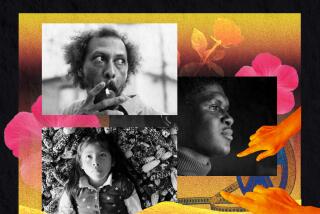THE REEL LESS TRAVELED
Gritty and exuberant, the 2003 documentary “Seville Southside (Poligono Sur)” reflects director Dominique Abel’s desire to capture the New Flamenco -- a form blending traditional Andalusian music with contemporary influences. To do so, Abel takes us inside an infamous housing project in the Spanish city, mixing lively conversation with music and dance, and building to a climactic tribute concert.
The film screens Friday to launch DocuSpain, a six-film survey of Spanish nonfiction filmmaking presented by the UCLA Film and Television Archive through Feb. 25 ( www.cinema.ucla.edu).
A visually low-key affair evocative of home movies, “Seville” opens with a re-creation of a 2000 event that saw Gitano (or Spanish Gypsy) families relocated to Las Tres Mil, a downtrodden apartment complex where, it is said, even taxi drivers refuse to go and a donkey observes life from a fourth-floor perch. Many of the residents are performers steeped in Gypsy culture.
Celebratory bursts of singing and dancing are broken up by debate among the multigenerational and multicultural community over its threatened heritage and the marginalized circumstances in which its people live. The most compelling aspect of the movie, by far, is seeing how the Gitanos’ passion and concerns translates directly into their music.
--
-- Kevin.Crust@latimes.com
More to Read
Only good movies
Get the Indie Focus newsletter, Mark Olsen's weekly guide to the world of cinema.
You may occasionally receive promotional content from the Los Angeles Times.











